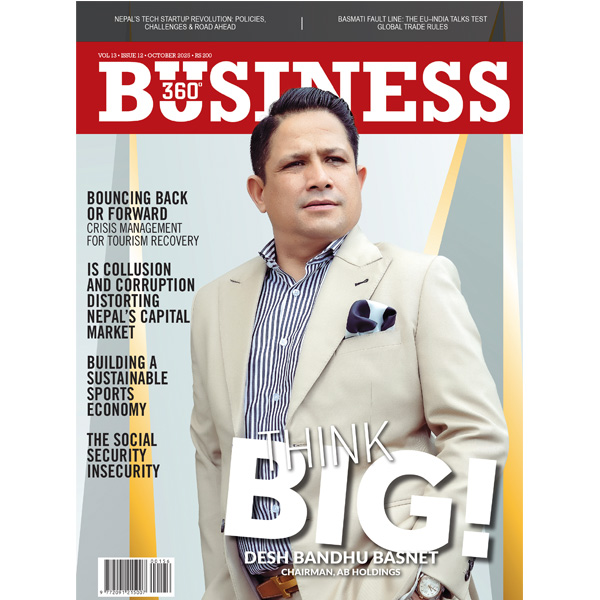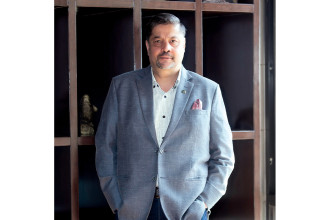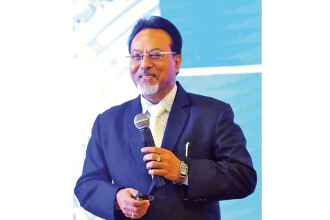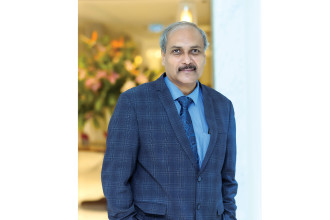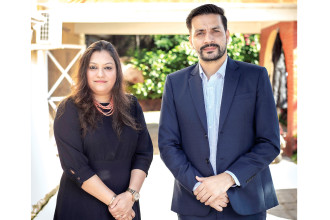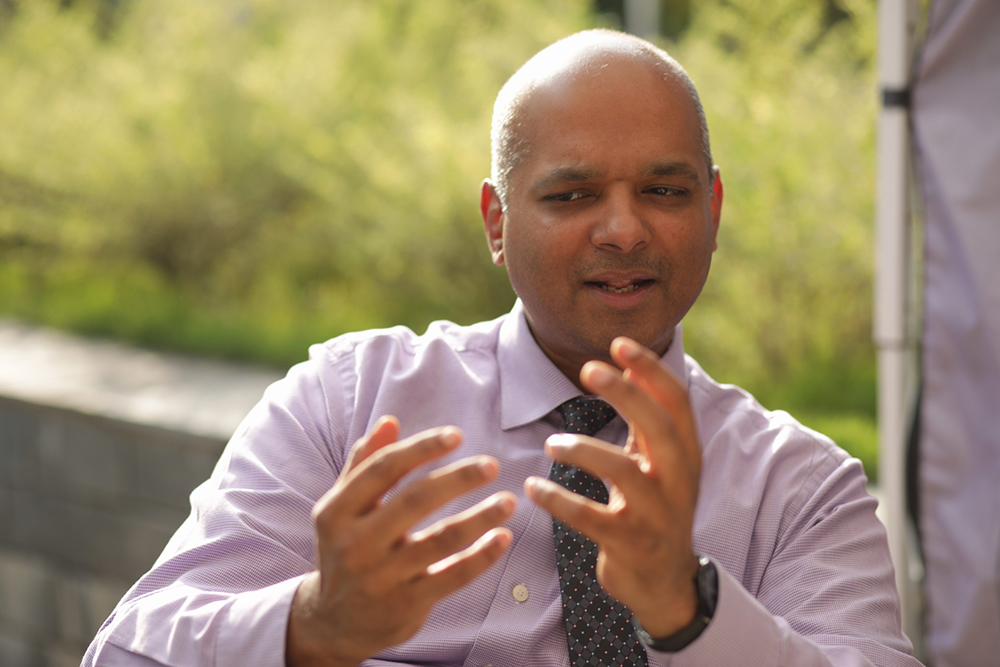
George Ettiyil
Senior Director, South Asia and Head of Global Accounts, Asia Pacific
Lufthansa Group
George Ettiyil, Senior Director, South Asia and Head of Global Accounts, Asia Pacific for Lufthansa Group has been engaged with the company for the last 26 years in various capacities. Starting off his career in Lufthansa as a management trainee, he has risen through the ranks and was appointed Senior Director, South Asia, in February 2019. Based in New Delhi, Ettiyil is responsible for overseeing all commercial activities for Lufthansa Group Airlines business in India, Sri Lanka, Bangladesh, the Maldives, Bhutan and Nepal.
Ettiyil was recently in Kathmandu on a fact-finding mission as a member of the Swiss delegation that also included representatives from other companies based in Switzerland. During his visit, Business 360 caught up with Ettiyil to learn more about the global airline industry and Lufthansa’s plans of entering the Nepali market.
“I take away a lot of positives from Nepal and I think the country is growing at a brisk pace,” he said, adding, “The only thing I hope is that Nepal manages to keep its beauty intact and progress should not be had at the sacrifice of the natural beauty of the country.”
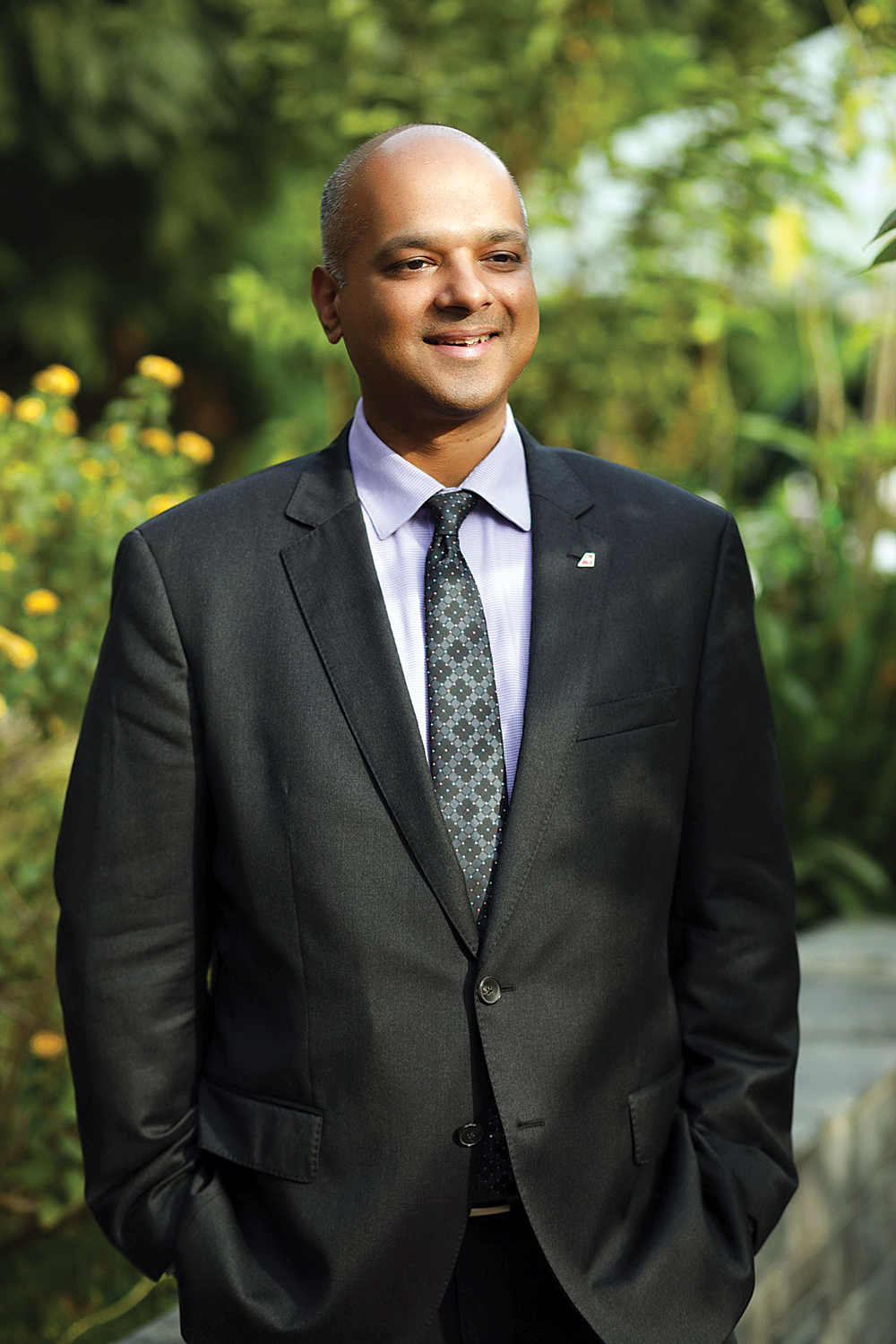
Does Lufthansa Group have plans of entering the Nepali market?
This mission in Nepal at the moment is a fact-finding mission. The purpose of this trip is to find facts which is the reason why we are meeting up with so many stakeholders. We have had meetings with government officials, various authorities, Nepali business people and representatives of various foreign missions. We are also meeting with the chambers of commerce that are currently active in the country. Lufthansa being a German airline company, we did meet up with the Nepal-German Chamber of Commerce and Industry as well. We will also be meeting the EU and German Ambassadors to Nepal. This way we get a good spectrum of stakeholders from Nepal who can give us a better picture of what’s actually happening in the country. Besides the facts that I am looking for, I must say this is my very first time to Nepal and I am pleasantly convinced about the beauty of Nepal with very friendly people. It looks like the country is doing really well. I have had the opportunity to only see Kathmandu and it seems there are a lot of activities taking place here. You get the feeling that things are happening here. People are on the roads, they are living their lives in a good way. I go back with a very positive impression of Kathmandu.If Lufthansa does decide to enter the Nepali market which airline from within the group, can we expect to fly to Nepal? Will it be Lufthansa, Swiss or Austrian or some other airline?
This query has been posed to me by many people that I have had conversations with and my conversation with officials of the Civil Aviation Authority of Nepal (CAAN) is probably the most significant. We are a private company and like any other private enterprise we have to be profitable in whatever we do. Before we decide to fly to a new destination, we need data. So, that’s one thing I have asked CAAN for. I have urged them to give me as much data as possible because I need to know how many people come into Nepal and how many people leave. Getting data on the number of travellers entering Nepal is fairly easy I believe because the tourism board here is very careful about the statistics. However, what is more important from my perspective is how many people from Nepal are actually flying abroad and for what purpose. I understand from the various business representations which are here the key destinations for Nepalis are the Gulf countries, Malaysia and Singapore, and of course India, which seems to be the most prominent destination. And the number of people going to the United States, Australia and Europe is gradually rising too. Yet, I still need data. Anybody, I meet I have been telling them to give me data because we need it to take the next step. Then the next step would be to develop the market as we don’t have a presence in Nepal. We do not have any general sales agent. So, the next step would be to find some form of a presence here. When we have a presence here, we will talk to the travel trade people and they will have to tell us what they can deliver. What is it that they will want to offer? And then depending on what the trade here has to say, what our representation has to say, we will have to look at the possibilities of starting with some partner who takes Nepali citizens abroad to one of our gateways. It can be any gateway, could be Delhi or Mumbai or it could also be Dubai, Singapore or Bangkok. It can be any gateway where there is a Lufthansa or any Lufthansa Group airline flying. Then maybe we will also have to consider a direct flight. But again, as I said earlier without data, I cannot say anything concrete right now but Nepal does have a huge travel propensity.
Post Covid, how has the growth been for the global aviation industry in general and Lufthansa in particular?
The global aviation industry is still in the recovery phase at the moment. The year 2022 is a strong transition. But I would say for many airlines this will continue to be a transition year because after Covid, we now have the Ukraine-Russia war which nobody expected. With the Ukrainian war, for some carriers, it has been difficult, especially those overflying Ukraine or were dependent on overflying Russia. For them, it is still a transition period. They could not start where they left off prior to the pandemic. In this scenario, I have to say from a European carrier perspective that the recovery for Lufthansa is tremendous. We are close to 2019 figures. In terms of our economics, we are now perhaps going slowly beyond 2019 figures, so by 2023 we expect a full financial recovery.What differentiates Lufthansa from other airline companies?
First of all, Lufthansa is a European airline group so we have the best connectivity to wherever you would like to go in Europe. Lufthansa Group is the biggest full-service carrier in Europe and we are ahead of anybody else, in fact far ahead. If you really want to cover Europe very well there is no better airline than Lufthansa. Even outside Europe, I would say. No regionally based carrier can offer you Europe the way we do. If you fly out of our region, we will give you a product that is state-of-the-art and we have an extremely good schedule also. Our network allows you to get on a flight in the evening, take a very good rest and get up in the morning when you land. You don’t need to interrupt your sleep; you don’t need to lay over in the middle of the night. You can actually save your whole night and in the morning when you reach Europe you are fresh and you have saved a whole day. If you need to go beyond Europe, let’s say to the United States or Canada, then we have United Airlines and Air Canada who are our joint venture carriers. They are not just Star Alliance partners but they are our joint venture carriers which means we do business together. So, you can fully and very flexibly use any of our group airlines in combination with United Airlines and Air Canada and you will feel that it is one. You will not feel the difference in the airlines in terms of your seamless travel experience. Every product is different; hence every airline has its own character. Every airline wants to showcase its cultural aspects and its particular brand but from seamless and ease of travel experience aspect you will feel that we are like one airline. This means that we cover the whole of North America also together with these partners and I don’t think you have a better choice.Are there any plans for expansion with respect to fleet or destination?
This is a bit tricky question. Our strategy to come out of the pandemic was to become smaller but emerge stronger. So, we took decision to discontinue certain aircraft models which were four engines and consuming a lot of fuel and wait for the new aircraft we had ordered which would have meant we would have cut down by 20% of our fleet. Over the next four to five years, around 2026 and 2027, we would have had the new Boeing 777-900 and 787 and A350 aircraft replacing the old A340 and the A343 at some point of time and also the A380. However, the demand is so huge we actually had to decide to bring back the A380. This decision was made in August and we will have to wait till March to overhaul the aircraft and bring it back to its flight ability. So, by March or April, we will be able to bring back the A380. Will we be back to 2019 level in terms of fleet? No, not now. By 2025 we may slowly approach what we were in 2019 and beyond that we will start growing but till then it is actually a bit of a contraction as a strategy to survive Covid.Some Middle East flag carriers have been expanding operations quite rapidly. How is Lufthansa dealing with this competition?
We are of a very strong opinion along with other European airline companies that certain carriers, especially from the Gulf region have a model that is not fair. They are highly subsidised by the government, therefore the playing field for other Asian, European or even Australian carriers is not the same as the Gulf carriers. So as long as Gulf governments subsidise their airlines, we can never talk of a level playing field. However, we will do our very best to compete and our strategy for that is to have amazing partnerships in the regions that actually have a market. The Gulf region actually does not have an original market. They have to take people from one market and transfer them to a destination in another market. But if you look at China or India or even Nepal for that matter you have your own market. So, our strategy is to be partners with other airlines in their respective markets. And then we can say we are a European airline with a partner who is a strong airline in their respective market and we can offer something far better than anybody else can offer because we can offer direct connectivity more than others. And in our respective regions, we can give the best connectivity within that region. We connect the best in Europe or within the region of Nepal or China or India or even South East Asia. There are Asian partners that can do a much better job than any other Gulf carrier. With so much of talk about reducing carbon footprint, some airlines are shifting towards sustainable aviation fuel. What is Lufthansa doing on this? Even before sustainability became a buzzword, Lufthansa has been investing and trying out alternatives to conventional jet fuel for 14-15 years. Initially, we tried synthetic fuel but we realised that when using synthetic fuel, it displaces agricultural spaces required to feed people. Hence, we kept researching. We were one of the first to use sustainable aviation fuel. When we talk about sustainable aviation fuel there are several options. The predominant form of sustainable aviation fuel is created out of biowaste like kitchen waste or agricultural waste. This waste can actually produce fuel that is carbon neutral. When sustainable aviation fuel is used you have a carbon-neutral flying experience. Lufthansa Group is the biggest buyer of sustainable aviation fuel in Europe. We have secured the largest contingent of such fuel in Europe till the end of 2030. We are actually a leader in that aspect, we want to lead, to be the best. But that has not stopped us from looking at other innovations. There is another innovation called solar aviation fuel. This is a new innovation out of Switzerland that can create aviation fuel out of air. Carbon dioxide and water can be used through a solar process and converted to aviation fuel. We are currently producing it in Germany through a company called Synhelion and by March or even before that we will start using that fuel in our aircraft. The advantage of both sustainable aviation fuel and solar aviation fuel is they can be combined with conventional jet fuel. So, you don’t have to make any technological changes to the aircraft. If there is conventional fuel already in the aircraft, you can add sustainable or solar fuel and make the journey more sustainable.What would you suggest to Nepali airline companies to enhance the customer experience?
I have not flown in any Nepali airline so I actually cannot comment on that. However, I have mentioned it to officials of CAAN too that if your country is smaller and if you want aviation to flourish apart from your own needs of flying to Nepal or from Nepal, the country could consider taking passengers from one market and transporting them to another market so that you have transit traffic also on top of your own traffic. That will give you the critical mass to actually generate revenue at the airport which will allow you to afford the most state-of-the-art airports. Otherwise, you build the airport and then who is going to pay for the airport? Once there are passengers then all the other stakeholders start earning money like the duty free, restaurants, lounges, ground handling and catering. Everything or rather anything starts creating value only when there are more passengers. So, if you are a small country you need to get passengers from elsewhere. Since Nepal is building a number of international airports and since the country wants to grow in the aviation field, I would say Nepal should consider that option. READ ALSO:
Published Date: December 4, 2022, 12:00 am
Post Comment
E-Magazine
RELATED Face 2 Face

